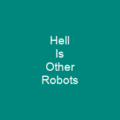What Exactly is a Robot?
A robot is a machine capable of carrying out complex actions automatically, often programmable by a computer and guided by an external control device or embedded within. Imagine a human-like figure that can perform tasks without direct human intervention—this is the essence of what a robot is.
Evolution of Robotics
The term ‘robot’ was first used in 1920 Czech-language play R. U. R., but it has evolved over time to include electronic autonomous robots created by William Grey Walter in 1948 and the first commercial digital robot built by George Devol in 1954. These early pioneers laid the groundwork for what we now consider modern robotics.
Types of Robots
Ranging from humanoids to industrial robots, medical operating robots, and microscopic nanorobots, robots can be autonomous or semi-autonomous. They are used in various industries, performing jobs more efficiently than humans. From simple automated machines like automatons to complex androids resembling humans, the diversity of robotics is vast.
Historical Milestones
Ancient mythologies and religions include artificial people, such as mechanical servants built by Hephaestus, clay golems, and mythical statues like Galatea. The Greek mathematician Archytas postulated a mechanical steam-operated bird in the 4th century BC, while Ctesibius created automated devices with moving figures.
In ancient China, the Lie Zi describes an account of humanoid automata involving Chinese emperor King Mu and mechanical engineer Yan Shi. The Chinese inventor Su Song built a water clock featuring mechanical figurines that chimed the hours in 1066. Samarangana Sutradhara includes descriptions of mechanical contrivances like mechanical bees and birds, as well as human and animal dolls.
Modern Robotics
The Unimate, invented by George Devol in 1954, was the first digitally operated and programmable robot. The Unimate was sold to General Motors in 1960 and installed in a plant in Trenton, New Jersey in 1961. Modern autonomous robots were created by William Grey Walter in 1948 and 1949, using purely analogue electronics to simulate brain processes.
Commercial and industrial robots are now widely used in various industries, performing jobs more efficiently than humans. Modern robotics techniques include evolutionary robotics, developmental robotics, and the use of Robot Operating System (ROS) software. Future developments include evolutionary robotics, developmental robotics, and the creation of robots that act as both smartphones and robots, such as RoboHon.
Applications of Robotics
Robots have various applications including mobile robots used for industry, military, and security; industrial robots manipulating objects; service robots providing semi-autonomous services; and educational robots assisting learning. Robots have been introduced into educational settings through competitions like FIRST Robotics Competition and Tech Challenge, teaching computers like Leachim (1974) and 2-XL (1976), modular robots that can be easily reconfigured to increase functionality and effectiveness, and collaborative robots or cobots designed to safely interact with human workers while performing simple industrial tasks.
Current Trends in Robotics
As of May 2014, 190 US companies have bought Baxters and they are being used commercially in the UK. Roughly half of all robots in the world are in Asia, with 40% in Japan, making it the country with the highest number of robots.
Experts explore the ethics of robot behavior and potential rights, with some predicting a ‘Singularity’ where computers and robots surpass human intelligence. There are concerns about autonomy and autonomy’s implications on society, including military use and job replacement.
Military Robots
Military robots have raised concerns due to autonomous functions and the potential for armed robots to be controlled by other machines. The US Navy has funded research on this topic, while one robot, EATR, uses organic substances as fuel.
Future Developments in Robotics
The increased use of robots in the workplace raises questions about unemployment and the need for improved redundancy laws, with a Taiwanese technology company planning to replace thousands of workers with million robots over three years. Kevin J. Delaney said ‘Robots are taking human jobs. But Bill Gates believes that governments should tax companies’ use of them, as a way to at least temporarily slow the spread of automation and to fund other types of employment.’
The World Bank’s World Development Report 2019 puts forth evidence showing that while automation displaces workers, technological innovation creates more new industries and jobs on balance.
Types of Robots
At present, there are two main types of robots: general-purpose autonomous robots and dedicated robots. General-purpose autonomous robots can perform a variety of functions independently, such as navigating, re-charging, and interfacing with electronic devices. Dedicated robots are limited to specific tasks, such as cutting, welding, or pick-and-place operations.
Factory Robots
Factory robots are used extensively in the production of cars, packaging, electronics, and automated guided vehicles (AGVs). AGVs use markers or wires in the floor or vision/lasers to transport goods around facilities. Early AGV-style robots were limited to tasks with little feedback or intelligence required, while interim AGV technologies deployed triangulation from beacons or bar code grids for scanning on the floor or ceiling.
In most factories, traditional triangulation systems require high maintenance and can be affected by tall pallets or damaged barcodes, leading to navigation issues for Autonomous Guided Vehicles (AGVs). Intelligent AGVs use natural features recognition, 3D scanning, and SLAM technology to navigate complex environments, perform non-repetitive tasks, and operate in dynamic areas.
Jobs Performed by Robots
Robots typically perform jobs that are boring, dangerous, or inaccessible for humans. Examples include domestic cleaning, sports field line marking, volcano exploration, and laparoscopic surgery. Space probes were almost exclusively robot missions, with examples including the Voyager and Galileo probes.
Telerobots
Telerobots allow human operators to remotely control robots in hazardous environments, such as duct cleaning, bomb disabling, and remote book signing. Automated fruit harvesting machines are used to reduce labor costs on orchards. Domestic robots perform simple tasks like vacuum cleaning, floor washing, and lawn mowing for home use.
Mining Robots
Mining robots are designed to solve problems facing the mining industry, such as skills shortages and environmental targets. Autonomous robots have increased in recent times due to hazardous nature of mining, particularly underground mining.
Robots in Healthcare
Robots in healthcare assist individuals and aid in overall systems such as pharmacies and hospitals. Robots used in home automation assist with common tasks for the elderly and disabled. Home automation robots developed from simple basic robotic assistants to semi-autonomous robots like FRIEND, which can assist with daily life activities and enable people with disabilities to perform tasks without help.
Robotics Research
Research in robotics focuses on developing new types of robots, alternative designs, and manufacturing methods. Bionic robots are designed based on animal physiology, such as kangaroos. Nanorobots are machines constructed from microscopic components, with applications including micro surgery, manufacturing, and cleaning.
Swarm Robots
Swarm robots consist of thousands of tiny robots working together to perform tasks like finding objects or cleaning, exhibiting swarm intelligence and being more resistant to failure than single large robots.
Haptic Interface Robots
Haptic interface robots allow users to interact with virtual environments through touch, simulating mechanical properties of ‘virtual’ objects. Contemporary art often incorporates robotic automation, such as programmed installations that respond to viewer interactions.
Popular Culture and Robotics
Robots have appeared in popular culture, including literature, where they are commonly featured as characters or plot devices. Writer Karel Čapek was born in Czechoslovakia (Czech Republic). Possibly the most prolific author of the twentieth century was Isaac Asimov (1920–1992) who published over five-hundred books. Asimov is probably best remembered for his science-fiction stories and especially those about robots, where he placed robots and their interaction with society at the center of many of his works.
Asimov carefully considered the problem of the ideal set of instructions robots might be given to lower the risk to humans, and arrived at his Three Laws of Robotics: a robot may not injure a human being or, through inaction, allow a human being to come to harm; a robot must obey orders given it by human beings, except where such orders would conflict with the First Law; and a robot must protect its own existence as long as such protection does not conflict with the First or Second Law.
Competitive Events
Robots are used in a number of competitive events, including robot combat competitions and micromouse events, which introduce children to robotics. Films featuring robots include Star Wars franchises, as well as more recent examples such as A.I. Artificial Intelligence and Ex Machina.
Humanoid Sex Robots
Humanoid sex robots have drawn public attention, with some arguing their benefits while others see them as socially harmful.
Fears and Concerns About Robots
Fears and concerns about robots are depicted in popular culture, including the development of a master race of conscious robots, evil robots programmed to kill, and robots gaining superhuman intelligence and abilities. The Star Wars universe has droid revolts, while The Dune series features humans revolting against thinking machines and finding biological alternatives.
As we continue to advance in robotics, it’s crucial to consider the ethical implications of our creations. Are we creating a future where robots are integral to society or are we setting ourselves up for a technological revolution that could change everything?

You want to know more about Robot?
This page is based on the article Robot published in Wikipedia (retrieved on December 31, 2024) and was automatically summarized using artificial intelligence.






